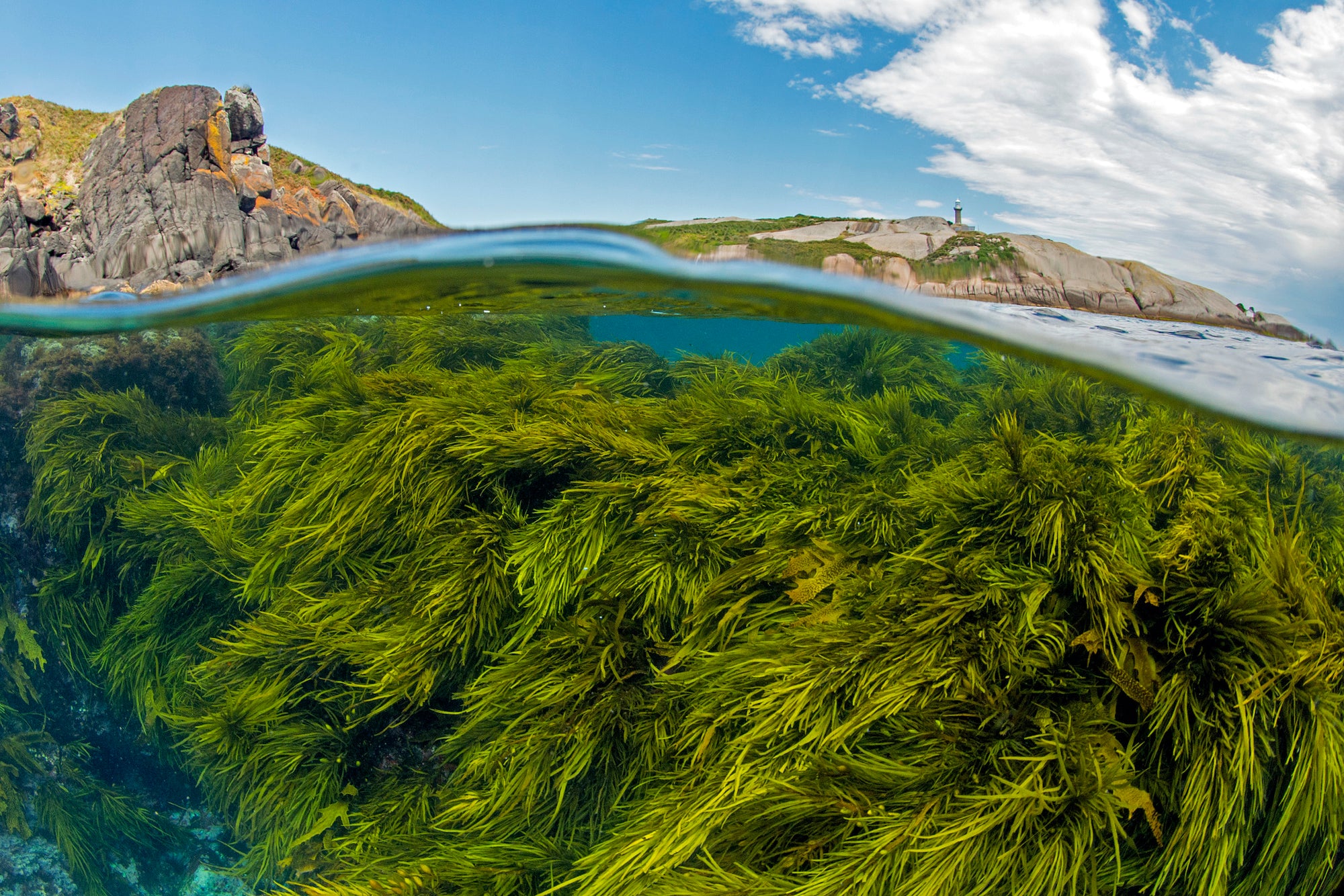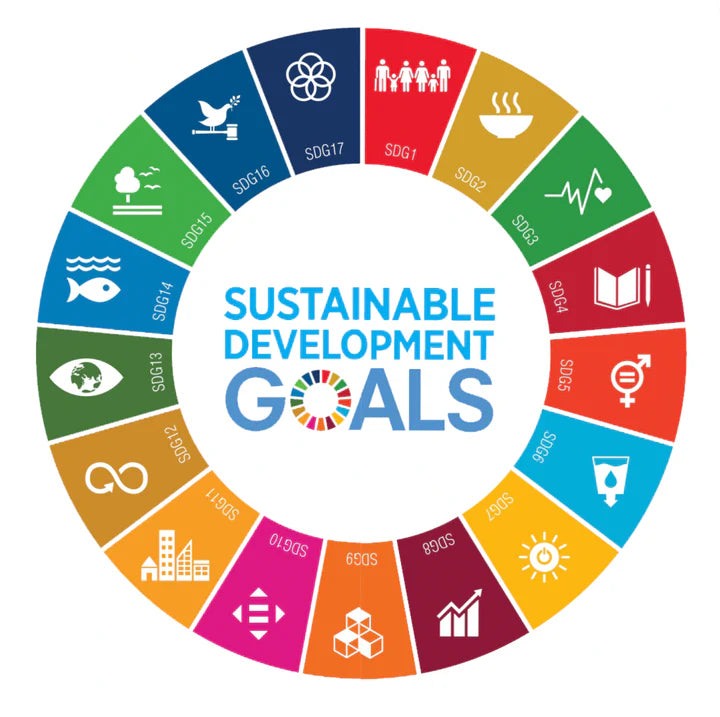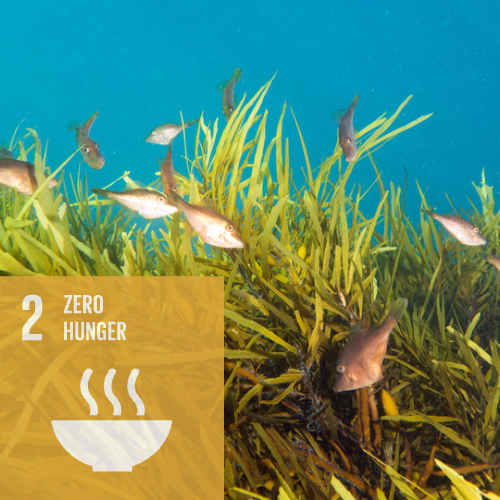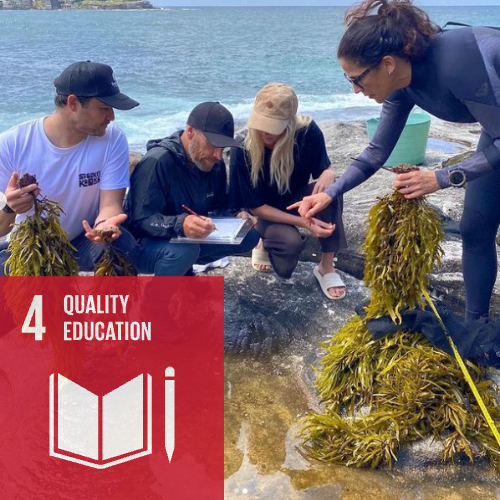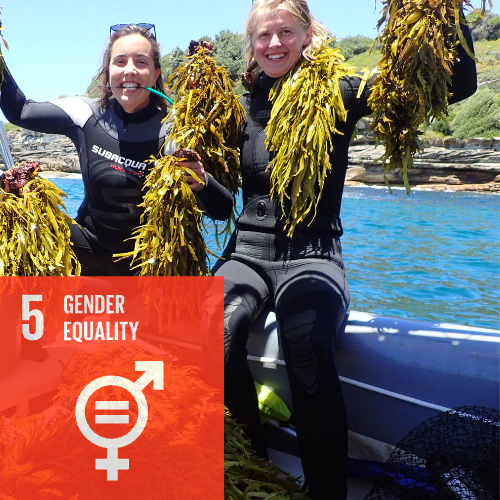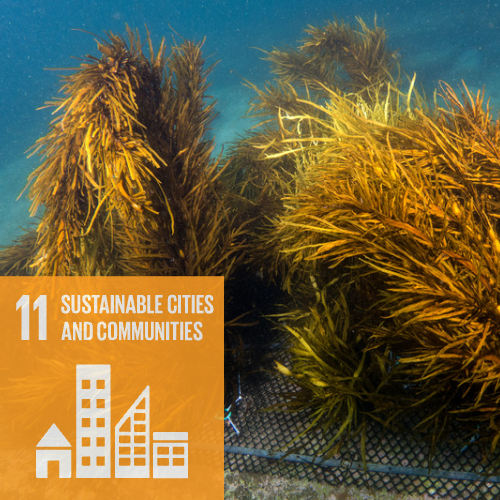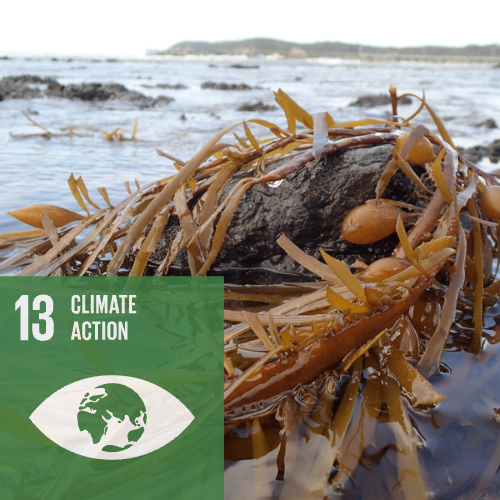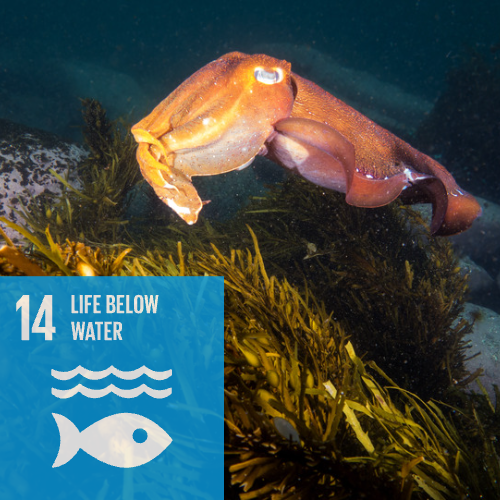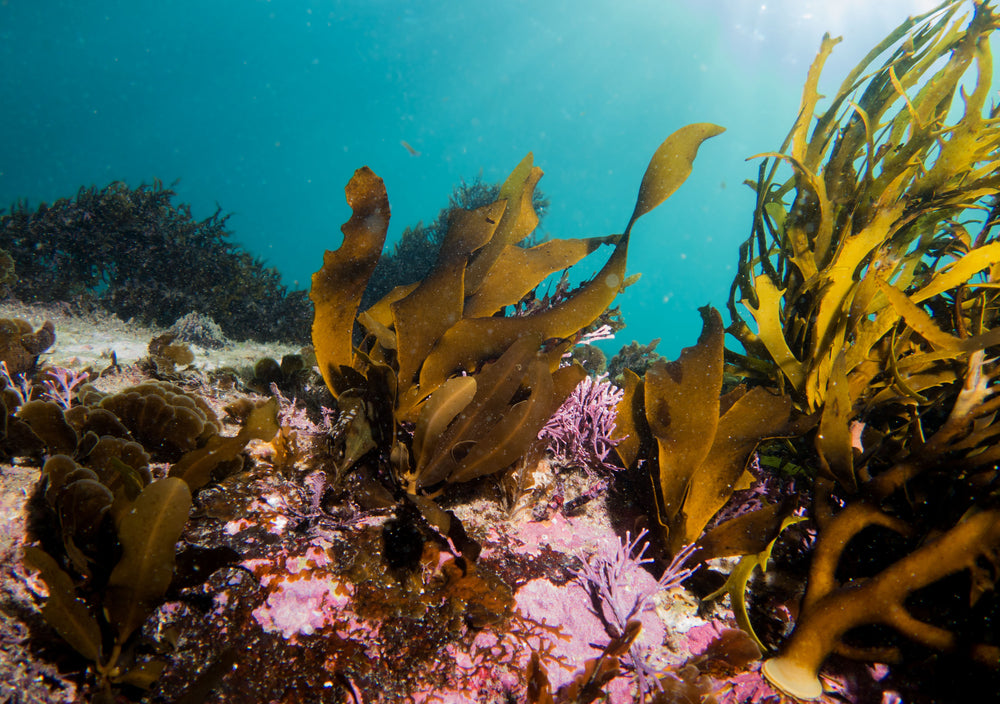
Sydney, Australia
This page details the UN Sustainable Development Goals being addressed by the SeaTrees project along the South Bondi subtidal rocky reef in Sydney, New South Wales, Australia.
Sustainable Development in Sydney
With the support of our local project partner Operation Crayweed, SeaTrees is conducting the restoration of 43,056 sq-ft (4,000 sq-m) of kelp within two separate project sites along the South Bondi subtidal rocky reef in Sydney, New South Wales, Australia.
Crayweed is among the most important ecosystems on the planet, providing critical food and habitat for hundreds of species. These vast underwater forests support coastal food webs, sequester immense amounts of atmospheric carbon, produce oxygen for marine life, and support unique coastal biodiversity, which is not supported by any other seaweed species.
